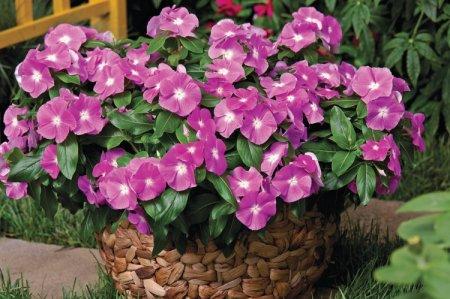
Who doesn't know about spectacular climbing roses? Yes, yes, these are the same ones that decorate arches, gazebos and other decorative compositions. They have several characteristics and differences from common shrubs. Let's tell you more!
general information
Climbing roses belong to the genus of rose hips, and they are the most popular vertical landscaping plant for literally everything in a row. Garlands, columns, walls, pyramids - they are truly adored by landscape designers around the world.
Climbing roses bloom from late spring to autumn. It is very difficult to give them a general description due to the variety of species. The average length of climbing shoots varies from 2.5 to 5 m.
Flowers can be simple or double, of different colors and even with a different aroma. Among climbing roses - just a huge number of hybrids. Centuries of breeders' work have not been in vain.

Types of climbing roses
Climbing roses do not have a generally accepted classification throughout the world. But at the same time, several main groups and categories can be distinguished, depending on the specifics of growth and flowering!
Curly roses
These are the so-called real climbing roses or Rambler. They have long, flexible shoots that stretch up to 5 m. They are evenly covered with thin curved thorns and small flowers, almost odorless.

Climbing roses
Climber is a hybrid of climbing roses with other decorative species. This is how we managed to get long and strong shoots with large flowers and abundant flowering.

Roses of Cordes
This is a relatively new group, which included hybrid varieties with 2.5-meter shoots and large multi-colored flowers. They are hardy, unpretentious and with excellent immunity.

Kidney mutations
In catalogs, this category is usually labeled with the "Climbing" tag. These include roses that are derived from floribunda or grandiflora based on kidney mutations. They grow rapidly and intensively and later bloom in large flowers up to 11 cm.

Climbing rose care
Roses are quite capricious, so you will have to spend time trying to establish the optimal care regimen. Moreover, the features strongly depend on the specific variety. The only thing - we advise you to choose species with good immunity!
Temperature and lighting
The temperature conditions of mid-latitudes are quite suitable for climbing roses without unnecessary complications. But with the light you have to strain. You need an area well lit in the morning to dry the dew. But starting from noon, you will need protection from direct sunlight, which causes burns on delicate petals.

Watering
Climbing roses should not be flooded too often. Better sparse, but plentiful watering: up to 2 buckets of water under the bush every 1-1.5 weeks. Do not plant roses in areas with a close occurrence of groundwater.

The soil
The ideal soil for climbing roses is fertile loam. If the soil is too sandy, be sure to add clay when digging. But it is better to loosen too clay soil with sand.

Fertilizers and feeding
In the first year of life, only one potash supplement is needed at the end of summer for lush flowering. But adult bushes can be fed with complex mixtures and organic matter up to 5 times per season, evenly distributing the intervals. From 3 years old you can use only organic. It is best not to fertilize during active flowering.

Pruning
In the spring, after removing the shelter, immediately cut off all frozen and damaged leaves. To stimulate growth, shorten thin and weak shoots. In addition, you can cut off some of the old veto to form a bush. Then carefully lay out all the branches and wait until they begin to grow actively. And only after that, gradually tie it to the support.
Summer pruning is only needed to control flowering, so this is just an adjusting procedure as needed. Single and repeated flowering varieties have different characteristics. But the third and already more important pruning is needed in the fall - to prepare for winter.

Garter and supports
Climbing roses definitely need support and a garter. They are very tenacious, so everything will do - from special nets to the wall of a house or an old tree. We recommend using a regular strong twine to tie the shoots.

Wintering
Climbing roses must be covered for the winter as soon as the temperature drops below -5 degrees. At the end of summer, reduce watering and switch to foliar feeding. In mid-October, remove the lashes from the supports and cut them, depending on the specifics of your variety's flowering.
Gently bend the branches to the ground using ropes and special arcs. Flexible shoots can be laid in a spiral. You can use spruce branches, fox or special covering materials - but always completely dry.

Transfer
It is better not to replant adult climbing roses unnecessarily. If it was needed to save the bush, the transplant is carried out in September or, at the most, in early October.
It is necessary to halve the long shoots, carefully dig in the root around and carefully remove the plant. Cut off all the damaged ends of the rhizome and immediately transplant the bush into a new hole, and then backfill, ram and actively fields.

Planting and breeding
Climbing roses are planted from mid-April to late May, or in the fall, at the end of September. It is most convenient to plant seedlings. First, immerse them in water for a day, then cut off all leaves with immature and damaged shoots. Trim the root and ground sections so that about 30 cm remains.
Treat all cuts with chiseled charcoal, and when working with grafted seedlings, remove everything almost to the place of the scion. Disinfect the roses in copper sulphate and plant them in the holes 50x50 cm with an interval of 1 m. Mix the top layer of soil with organic fertilizers and partially fill it on the bottom of the hole, and partially spread it on top.
When planting, gently straighten all the roots so that they do not bend. Cover the hole with soil mixture, compaction and fields. When the soil settles a little after watering, add more mixture of soil with manure. When planting grafted seedlings, the grafting site should be underground at a depth of 10 cm.After that, the rose is spud 20 cm.
In the spring, the planting technique remains the same, but the ground part must be shortened to 15-20 cm. In addition, in the spring, climbing roses are covered with foil, and every day they are aired for several minutes. The film is removed when the risk of night frost has finally passed.

Climbing rose pests and diseases
The most common climbing rose disease is powdery mildew, which appears as a white bloom in wet weather. Plants gradually deteriorate and wither. It is necessary to quickly remove the affected areas and treat everything with a fungicide.
Another fungal disease is black spot, which appears on warm, humid days or when potassium is deficient. But rust appears with orange spots and bumps. Treat roses with Bordeaux liquid and feed them after a while.
Of the insects, climbing roses are most preferred by spider mites. In second place is the rose-colored aphid, which hibernates right on the plant and reproduces literally before our eyes. Less common are leafworm butterflies, pennies, and small rosy scale insects. The principles of control are the same: do not thicken the planting, regularly examine the leaves and use complex insecticides at the first identified pests.

Climbing roses - photo
Luxurious flowering walls, in which climbing roses grow, are unconditionally worth all the time that was spent on growing!




























